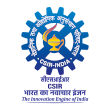Background
Background
Background
Before the advent of globalization and liberalization era, the nation was more focused on self-reliance and indigenous development, which also guided the country’s objectives for technology development. High tariff barriers, limited competition in the domestic markets, poor integration with global markets, less emphasis on exports, greater focus on conserving foreign exchange rather than creating it, all led to an environment where S&T interventions were inward looking and determined by goals such as import substitution, conserving scarce foreign exchange and manufacturing without consideration for cost & level of technology. This resulted in country focusing largely on research areas where knowledgebase was already available and market demand existed. Whilst this approach suited well to the strategic sector(s), where technologies were not available at any cost or denied to us, this did not serve well the ends of competitive technology development. Public R&D institutions largely pursued the objectives of reverse engineering with focus on cost effective processes rather than novel products.
The industrial development model pursued by India, till the late eighties did not effectively encourage original R&D endeavor by industry. As a result, practically not a single technology originated / emerged from India which was globally competitive. The shift in the perception towards R&D began to change with the economic reforms of 1991 and a paradigm shift took place with India’s accession to WTO in 1995. However, accessing globally competitive industrial technology became difficult due to integration of the global trade / economy. Indian industry thus had no option but to develop such technology indigenously to survive. Several schemes for promoting industry-institute partnership for specific technology development initiatives then existed such as PATSER, Homegrown Technology etc. and a new scheme on promoting R&D in pharma industry was evolved in 1994 to address some of the concerns. However, there was none aimed at capturing global leadership position.
Genesis
The genesis of NMITLI was the address of the Hon’ble Prime Minister to the Indian Science Congress, at Pune on 3rd January 2000, wherein he called upon the scientific community to make the 21st Century India’s Century – Ikkeesvin shatabdi Bharat Ke Shatabdi. Dr. R.A. Mashelkar, the then Director General of CSIR submitted a conceptual note to Finance Ministry on February 17, 2000. Thereafter, the Hon’ble Minister for Science & Technology had enlarged upon the theme by exhorting the scientific community (on 21st February, 2000) to take up the challenge to create Indian Science that will lead and not follow.
The Hon’ble Finance Minister followed it up with a determined action. In his Budget - 2000 address to Parliament, he said that: “We must harness our potential in Science and Technology to realize the dream of modern India envisioned by the Prime Minister in his address to the Indian Science Congress last month……I am making a provision of Rs. 50 crore in the budget of the Department of Scientific and Industrial Research for launching a New Millennium Indian Technology Leadership Initiative. It will focus on areas which fulfill national objectives and will be based on partnership between the Government and private sector”.
The responsibility of conceptualizing, evolving and implementing the programme was assigned to the Council of Scientific & Industrial Research (CSIR).
Initiation
CSIR undertook national consultations in evolving the program. These included over 1000 letters from DG, CSIR to various opinion makers from all walks of life, over 65 brain storming meetings in various parts of the country, distribution of about 10,000 posters etc. Based on the responses received and discussions held, CSIR defined the main objective of the NMITLI as “to catalyze innovation centered scientific and technological developments as a vehicle to attain for Indian industry a global leadership position, in selected niche areas in a true ‘Team India’ spirit, by synergizing the best competencies of publicly funded R&D institutions, academia and private industry” and positioned it distinctively with novel features.
Novel Features
The strategy adopted for NMITLI is to obtain an inverse risk-investment profile i.e. low investment - high-risk technology areas (with global leadership potential) with investments increasing as developments take place and the projects move up on the innovation curve with reduction in risks. Therefore, the program has been positioned differently with certain distinctive features. These features have been evolved based on large scale national consultation and due diligence. Some of these are briefly highlighted below:
A proactive program
- Instead of funding a project based on requests/applications, the program identifies the areas for development based on national consultation and invites best partners from institutions, academia and private sector to play a role in the development;
Types of Projects:
Both ‘push’ and ‘pull’ type of projects are evolved under NMITLI, which are appropriately named as (i) Nationally Evolved Projects (NEP) and (ii) Industry Originated Projects (IOP);
PPP mode
- Almost all projects are built in a public-private partnership mode;
Emphasis on identifying and building the projects
- Greater emphasis is laid on identifying the niche areas and building the projects with the help of best brains in the country. A specially constituted project wise expert group builds the project by interacting with a large number of researchers and stake holders with focus on technology development;
ST inputs
- High quality technical inputs are provided at both project development as well as at implementation stage;
Monitoring; review system
- A two-tier tight monitoring system is introduced to ensure realization of the objectives and deliverables. At the first level is an internal Steering Committee comprising PIs (meets once in 3 months) and at the second level an external independent Monitoring Committee comprising recognized peers (meets at least once in six months). The later committee is entrusted with the responsibilities to recommend: (i) foreclosure or modification of the project or sub component; (ii) inclusion of additional institutional / industrial partners wherever necessary; and (iii) revising the funding support to any / or all implementing partners;
IP mapping
- The program provides for continuous mapping of the IP scenario for each project and in licensing of IP with a view to building of a portfolio and achieving the leadership position;
Foreclosure of projects
- the program also provides for foreclosure of the non-performing or non-achievable project components; and
Financial support
– An innovative feature of the program is that it provides financial support to all players in the project. The support is in the form of grant-in-aid to the institutional partners in public domain and as a soft loan (@3% interest) to the industrial partners.

 Pensioners Corner
Pensioners Corner Screen Reader Access
Screen Reader Access Skip to main content
Skip to main content

























